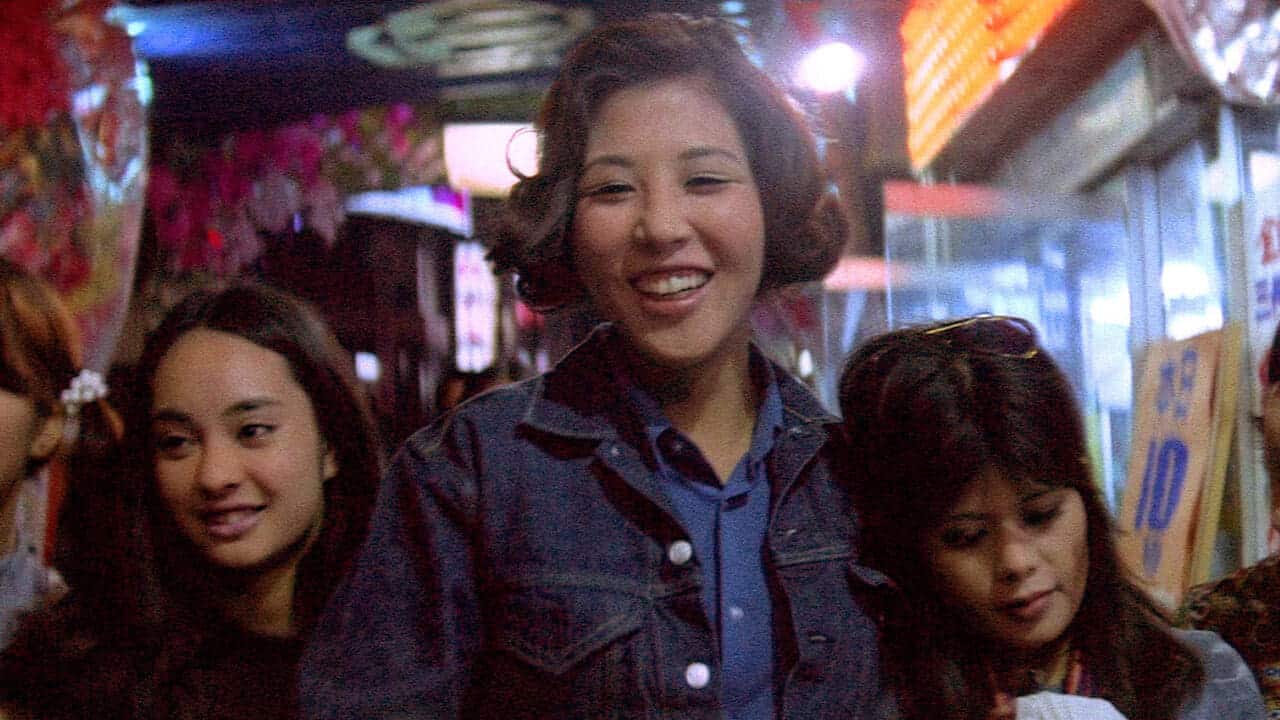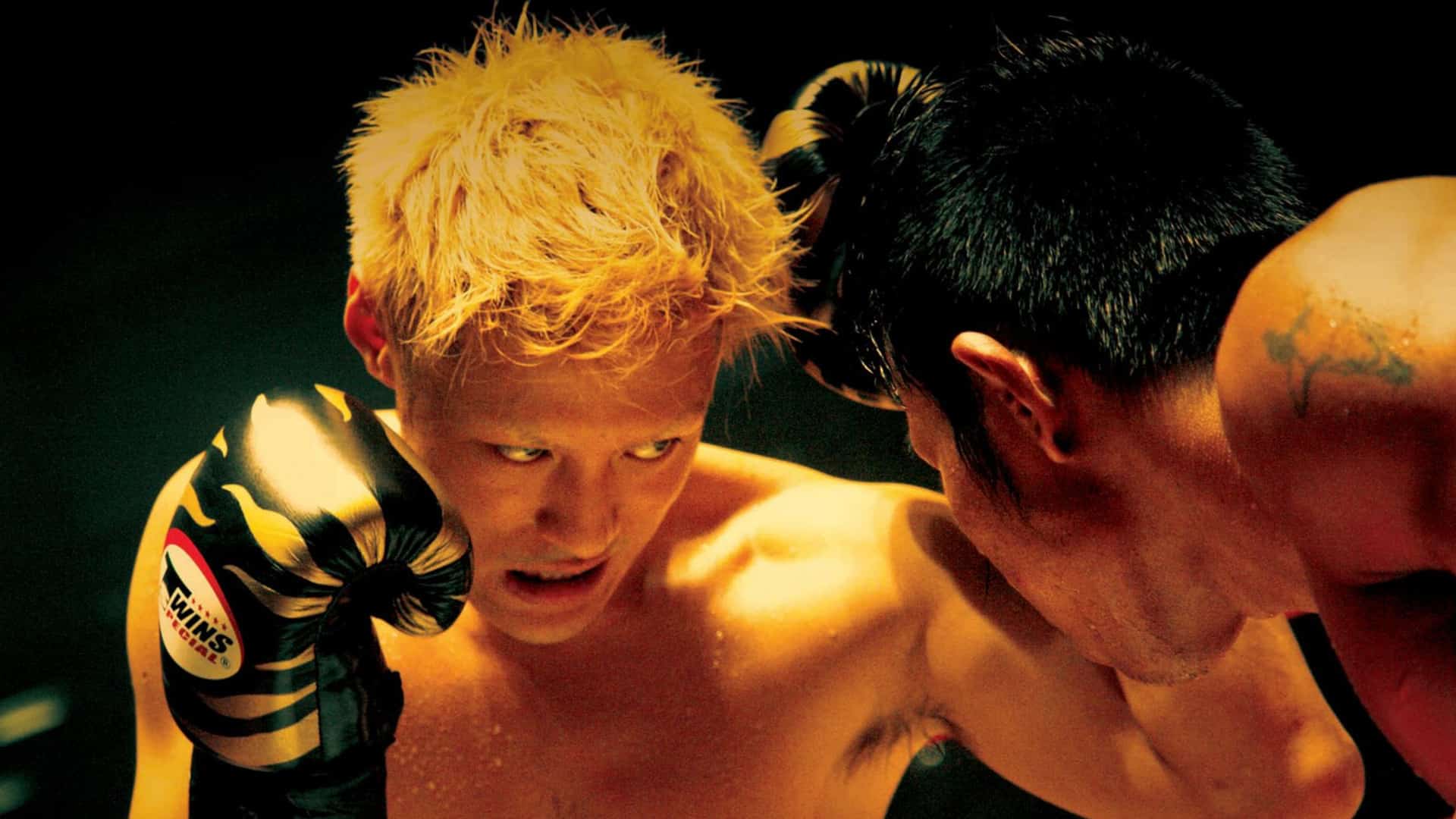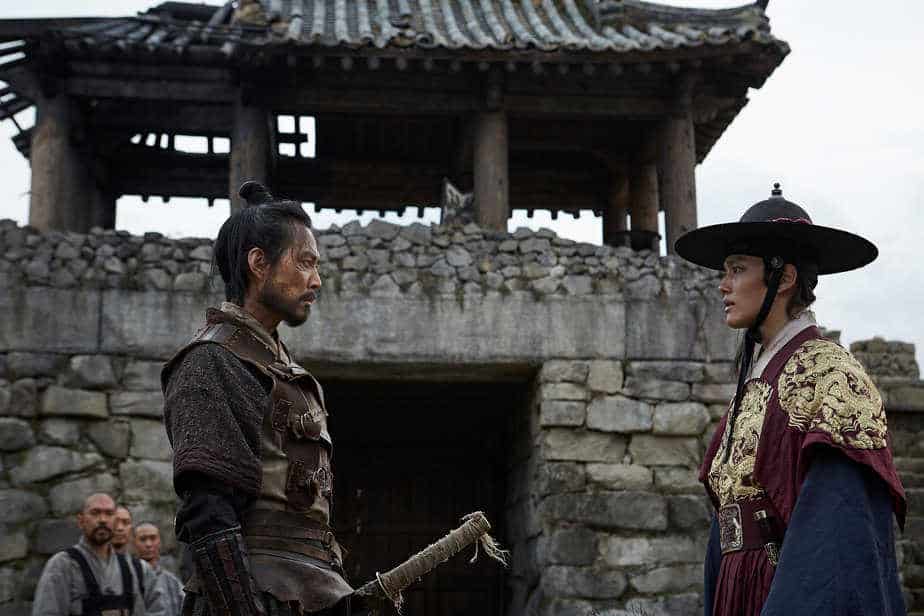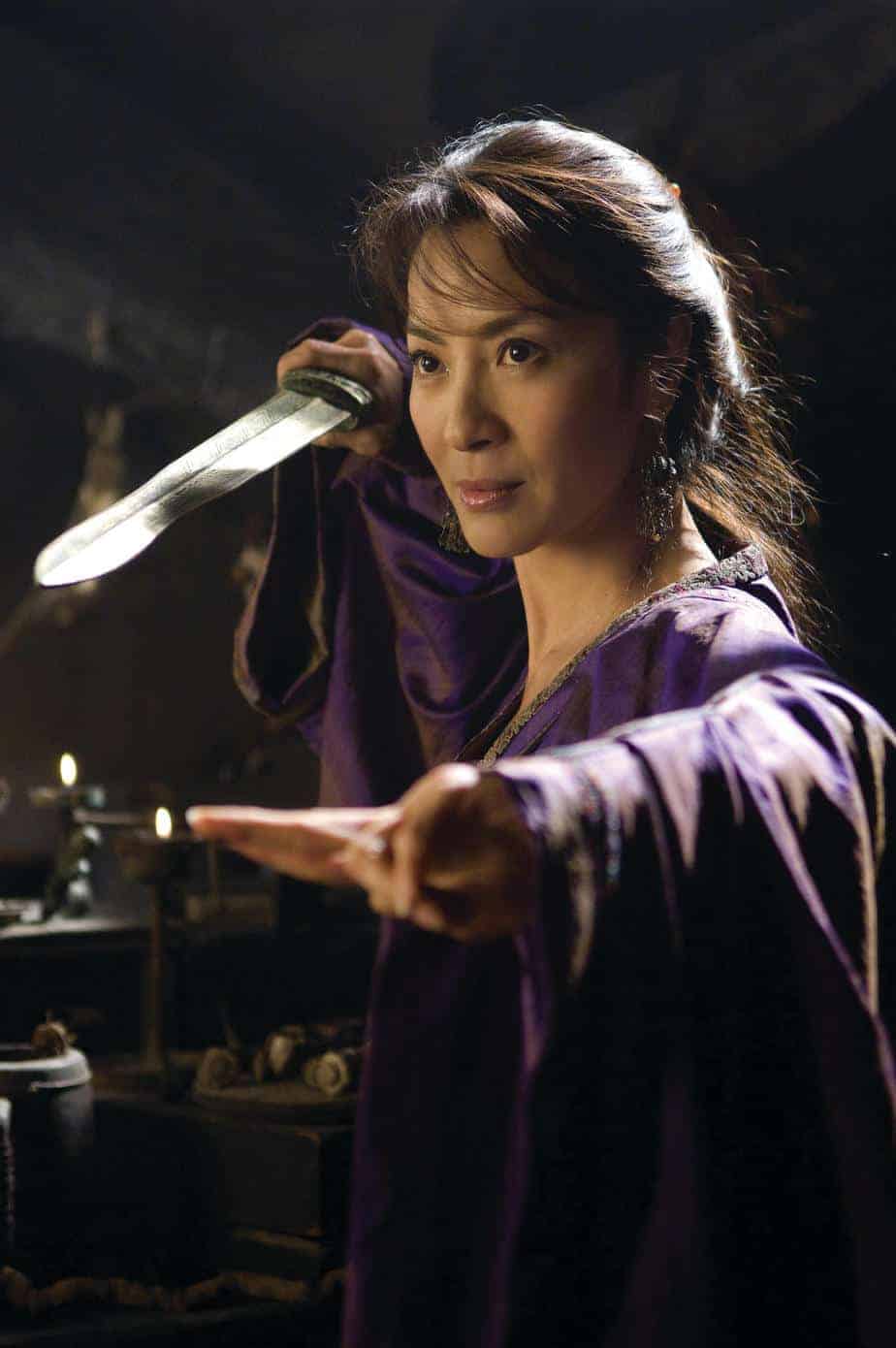“See You Then” sounds like a nostalgic, even ominous, title — and yes, Mari Walker's debut feature is a bit of both. “See You Then” witnesses the get-together of two individuals — Kris (Pooya Mohseni), a tech woman who has recently undergone a gender transition, and Naomi (Lynn Chen), an artist who has unwillingly become a mother over the years. After spending the decade apart, the two ex-lovers catch up over dinner, drinks, and eventually a studio visit, ruminating upon what it means to be a woman.
Prior to the film's official debut at SXSW's Narrative Feature spotlight, we had the opportunity to talk to Mari over Zoom. Walker was so incredibly on her toes (perhaps this is because of the endless barrage of interviews?); for each question asked, she answered with stunning clarity and confidence. Though we only shared a brief encounter (online too, at that), we bounced around timely topics, including trans representation, Asian American casting, and the so-called “fundamentals” of femininity.

This interview has been edited and redacted for clarity.
I was struck by how vulnerable the content of your film is. Could you tell me more about your process?
[Since I was a high school sophomore,] it has always been a dream of mine to make films. I would write up these scripts that I was so proud of, but [their ideas] would be so huge, the scope so grand; there was no way I would be able to make them.
For this film, I wanted to focus on a chamber piece between two characters, since I wanted to learn how to direct actors. [Before “See You Then,”] I had been working in the documentary world. At the same time, I was also thinking through the characters' shared themes. What does it mean to be a woman? Do I define myself by my dreams to be a mother? What's my work/life balance and what conflicts with it? That built the backbone of my story.
The characters started to be written, and then they came to life, and then they suddenly manifest themselves. That's when you know you got something you really care about. I got to know them, and then I felt really bad about ruining their lives. (chuckles)
What was that like, jumping from documentary to narrative filmmaking?
Most of my doc work is in editing — I strongly encourage every director to learn how to edit — because then, when you're on set, you can say, “Oh I can lose these three shots because I know we're not going to have enough time in the day.” If there's a technical issue that comes up, then that editing brain is already built in place. The multiple types of footage shot over the years [that I worked with] really informed my own style.
[Additionally,] doc work is really great, but it's also a lot of listening. As much as I had to do a crash course to learn how to direct the actors, that documentary ability to listen and sit and observe really helped me make something that was just between two characters.
Your film is really dialogue-heavy, though — unlike your typical Linklater film, for example — the characters mostly stay in stasis: they're seated, they're standing, they're still. How did you choose what shots and angles to use? Why was there so much shallow focus?
[While conceptualizing the film,] we were concerned that we would get mired in the world of a filmed play. If you're using an RE, it won't have the depth-of-focus that the Venice would have. It can feel a little flat.
Kristen, Jordan, and I just happened to be in place at the same time, and we sat down to watch the trailer for “If Beale Street Could Talk” (2018) by the great Barry Jenkins. I just fell in love with the aesthetic and the look of it. It was like a massive canvas to tell a very intimate personal story, with this aspect ratio. It really felt like it had this extended power, like it felt cinematic.
As we were heading into it, we really wanted the film to have a sense of formalism – a sense of falling into things – like “My Dinner with Andre” (1981), David Lean's “Brief Encounter” (1945). We almost approached [“See You Then”] like a studio picture. We were adding a subversive layer to this since these two characters have never really been that seen, with just dialogue, telling these stories. We just wanted to introduce a new language to that kind of filmmaking.
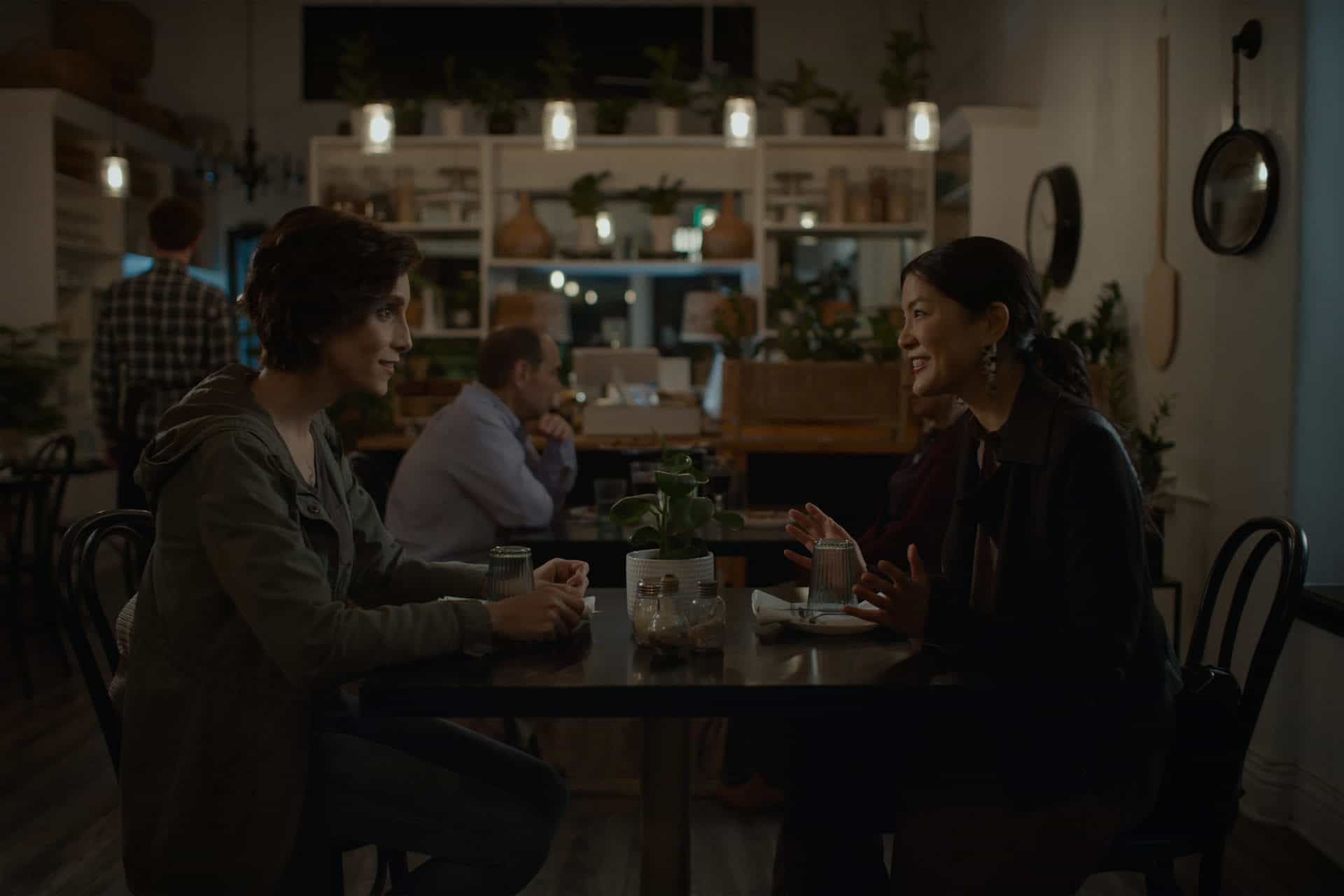
And the setting of Chandler – what was your rationale for that?
Chandler is funny. When I originally started writing [“See You Then”], I wanted this film to take place in Claremont, California. Claremont turned out to be way too expensive to shoot in. We'd have to rent a house, and people would have to crash in it, and so on. Then, since we decided to shoot all across Los Angeles, we didn't have an identifiable neighborhood to really set the film in. So Chandler is actually a fictional town that I created for the film. Chandler is the name of the family who started the LA Times, who has a very diverse and interesting history within Los Angeles — at one point, Los Angeles was almost called Chandlerville — so I wanted to set up its own world, its own universe, with the rules that they can live by. Little did I know that there's a Chandler, Arizona, which throws people off.
That's where I thought the film was!
In the downtown street scene, there's a scene of a clock, in which we digitally inserted a sign for “Chandler, California.” It's just so subtle though. It's one of those things that as a director, you just retroactively realize like — (gasp)“I gotta make sure this sounds right, that the world actually fills out.” (laughs)
I was really interested in locale since everything feels so natural for the two, like a natural place for an interracial couple to exist. Which leads me to my next question: how did you cast them?
For Kris' character, the top priority was casting a trans actor. Whoever suited the material best would be the right fit. I've seen Pooya in a short year ago when I had my own narrative short in the festivals; she's just such a great emotional conduit. It's a rarity that you can find someone who's able to describe an emotion and channel it perfectly on-screen. Eventually, I realized, “We have to go with Pooya. I've been thinking about her constantly. She has to be the one.”
For Lynn, I definitely intended — no matter who we chose — to cast an Asian American actress in the role. Certainly, Kristen and I are both biracial, so that had an effect. But it's also because we just don't see enough diverse faces on-screen. It was really getting on my nerves at that point. In the audition process, I learned there was just a wealth of untapped Asian American talent in LA. It's bonkers. Lynn was, without question, the right person for the role, but when people came in, I felt like — “I have to write a role for this person, and this person, and this person too!” They're just so damned good. Until we give them opportunities, change is not going to happen.
One moment I found striking was when Kris compares being trans to yellow fever. Men fetishize these women all the time.
One of the great challenges that the trans and queer community in general faces is that the material created about us is not created by people within those communities. Trans and Asian American tend to be fetishized by mass media in the way that it's consumed. The only way to change those things is to present alternate visions of that, to get diverse voices. Then you're able to remove this pendulum [where on one end, there's] anger and hatred, and then when it swings the other end, these people are deified and perfect. We've got to find our way to the middle. [Trans and Asian women] are just human beings. History may dictate why they may react one way to things, but that does not make them any different from anyone else.
I'm also interested in what Kris and Naomi embody. Sometimes, Naomi sounds borderline TERF-like, a la JK Rowling. I'm curious to hear what you have to say in regards to her character development and recent debates about femininity.
Naomi has so much personal animosity towards Kris' character because of what happened. Unfortunately, in many circumstances for individuals, that frustration morphs into a breeding ground for hatred. The definition of femininity and what that means — even Pooya's choice to cut her hair — was a very deliberate move to push back against these preconceived notions. Lynn, being an ally of the community, and having been in “Saving Face” (2004), she was very cognizant of the traps for these characters. While Naomi may have these sharp edges that are wrong, maybe for a trans person or someone else to see, she is still very much a human character.
What is so unfortunate now for these issues – like for JK Rowling – the boundaries of how we define femininity are so fundamentally flawed. If TERF rationales were still applied to people, then what happens if someone has a mastectomy? Are they less of a woman because they don't have breasts? These crazy constructs that everyone places to make themselves feel better really hurts all these other people. That needs to be confronted and challenged.
Speaking of challenges: what were some challenges or favorite moments that you had on set?
[Production] was the thirteen best days of my life. It was a gift. If anyone is able to make a feature is given a tremendous opportunity. Not many can make a first-time feature. The most fun I had on set was probably the bar. The hardest [part] was [Kris' and Naomi's] final conflict. I felt like a part of my soul was being removed during the filming. There are a few lines there in the final scene when we're just watching Pooya — who's not just channeling Kris and herself, but also me, what I was feeling, what I was experiencing. That loss of what could've been. It changed me. That's the most you could really ask for in a film.
And finally: what else are you working on?
I have a young adult trans love story that I'm super excited about, and a horror movie that's trans related – it's super sharp, edgy, intense. I'm really excited about that. But I have a wealth [of ideas,] like 40 to 50 of them. And I'm behind – I'm already in my thirties. Sometimes, I feel like, “Oh my God, how am I going to cram all of this in?” But I've got to find a way!
Maybe you can make a movie or two a year.
Exactly. Maybe two. (laughs)




